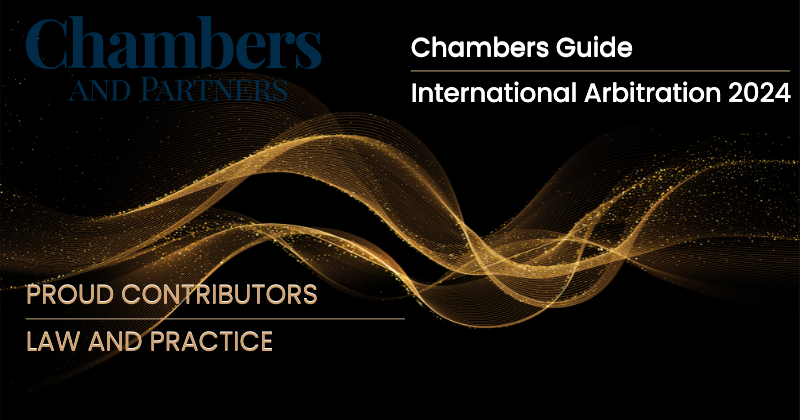Introduction
Bifurcation is a process by which complex legal disputes can be separated into distinct issues, which can then be resolved separately in the arbitral proceedings. It is the separation of the arbitral proceedings into different phases that helps in addressing distinct issues. Most often, bifurcation refers to the separation of jurisdictional is- sues from the merits of the dispute, or the separation of the issue of liability from that of damages. Bifurcation can potentially reduce the time and costs attendant to arbitral proceedings, as it allows the parties to focus on the most important issues, thereby avoiding expending time and costs over less significant issues.
Through bifurcation, arbitrators can identify the key issues in dispute and separate them into distinct phases or tracts. For example, in a construction dispute, the parties may agree to bifurcate the issues of liability and damages, allowing the parties to first determine liability before proceeding to the question of damages. This approach can be particularly useful in cases where the parties disagree over the extent of damages, as bifurcation allows the parties to focus on establishing liability first, which can often lead to the settlement of the entire dispute.
Bifurcation under various Rules of Arbitration
Rules of each arbitration institution may differ and the availability and procedure for bifurcation may depend on the specific terms of the arbitration agreement and the facts of the case. Under the majority of arbitration rules, bifurcation may be allowed, subject to the discretion of the arbitral tribunal. In general, arbitration rules do not contain any specifically laid out procedure pertaining to bifurcation. However, some rules empower the tribunal to order bifurcation, circumstances permitting. The power of arbitrators to order bifurcation is grounded on the principle that arbitral tribunals have discretionary powers to conduct arbitral proceedings as they deem appropriate.
For instance, the International Chamber of Commerce (ICC) Arbitration Rules, for example, provide that the arbitral tribunal may, after consulting with the parties, decide to bifurcate the proceedings if it considers it appropriate, taking into account the complexity of the case, the cost and efficiency of the proceedings, and the possibility of resolving certain issues separately.
On the other hand, the United Nations Commission on International Trade Law (UNCITRAL) Arbitration Rules do not expressly provide for bifurcation. Instead, parties are at liberty to agree to bi- furcate the proceedings, or the tribunal may order it if it considers it appropriate and the parties are agreeable.
Under the London Court of International Arbitration Rules (LCIA), a party may apply for bifurcation after the constitution of the tribunal but before the final award is issued. The tribunal may grant the request if it considers it appropriate and may make a procedural order setting out the issues to be bifurcated and the procedure to be followed.
Similarly, the International Centre for Settlement of Investment Disputes Rules (ICSID) provides that the tribunal may bifurcate the proceedings if it considers it appropriate, after consulting with the parties. The tribunal may also issue separate procedural orders for each issue before the final award.
Factors to take into account when considering Bifurcation
There are various factors to be taken into consideration when deciding whether or not to bifurcate. First, the complexity of the case should be considered. Where there are multiple issues to be addressed, bifurcation can help break down the case into smaller, more manageable parts, making it easier for the parties to focus on the key issues in the dispute.
Secondly, the resources of the parties to the arbitration should be factored in since bifurcation may not be appropriate in cases where the parties have limited resources.
Thirdly, the parties need to contemplate the likelihood of settlement. It is worth noting that bifurcation may not be appropriate in cases where parties are unlikely to settle, as it can add additional phases or tracks to the arbitration process, thereby defeating its intended purpose.
Lastly, the preference of the parties ought to be considered, as party autonomy is a pillar of any arbitration. The decision to bifurcate or not to bifurcate should reflect the preference and needs of the parties involved. If the parties agree that bifurcation is the most suitable approach, then it may be a useful tool for resolving the dispute. However, if one party is opposed to bifurcation or prefers a different approach, then it may not be effective in the proceedings.
Other tribunals, however, have ruled that they should not be placed in the “strait-jacket” of considering the issue of bifurcation solely through the lens of the Glamis Goldcriteria as they do not form a “stand-alone test”.
Pros and Cons of Bifurcation
The decision to bifurcate or not to bifurcate in arbitration proceedings ultimately depends on the specific circumstances of the case, and above all, the preference of the parties involved. There is no one- size-fits-all approach, and the benefits and drawbacks of bifurcation should be carefully weighed against the specific needs and objectives of the parties.
In Kenya, some concerns have been raised about the issue of bifurcation. One such concern is that parties may use bifurcation as a delay tactic or as a way to increase the length and the costs of the arbitral process. Another concern is that bifurcation may unfairly prejudice one party over the other, especially if the issues are interdependent.
Pros
Bifurcation fosters efficiency by helping to streamline the arbitral process and allows the parties to focus on the key issues in the dispute, potentially saving time and costs. By breaking down the complex issues into smaller, more manageable issues, it can help the parties who may be overwhelmed by the complexity of the dispute. Furthermore, it can create opportunities for settlement by allowing parties to address the key issues in dispute separately. For example, if liability is established in the first phase of bifurcation, the parties may be more willing to settle the matter before proceeding to the damages phase.
Bifurcation also promotes flexibility since it can be tailored to the specific needs of the parties and the dispute, allowing greater flexibility in the arbitration process.
Cons
On the downside, bifurcation can unwittingly add complexity to the arbitral process by requiring the parties to navigate multiple phases or tracks of the case. This can be especially challenging for the parties who are not familiar with arbitration or who lack the resources to effectively navigate the bifurcated process.
Moreover, bifurcation can at times increase the cost of the arbitration by requiring additional hearings and discovery of each phase or track of the case.
Additionally, it can also delay the resolution of the case by adding additional phases or tracks to the arbitration process. Bifurcation can also create the risk of inconsistent results if the same issues are addressed differently in each phase or track of the case. This can cause confusion and undermine the credibility of the arbitration process.
Bifurcation fosters efficiency by helping to streamline the arbitral process and allows the parties to focus on the key issues in the dispute potentially saving time and costs. By breaking down the complex issues into smaller, more manageable issues, it can help the parties who may be overwhelmed by the complexity of the dispute.
Procedure to be followed when requesting for Bifurcation
Once a party to an arbitration has decided that they want to bifurcate the proceedings, they can proceed to request for bifurcation. In the vast majority of cases, the request for bifurcation of jurisdictional issues is filed by the respondents and to a lesser extent by the claimants or by both parties as per their agreement.
Firstly, the party that seeks to bifurcate the arbitral proceedings makes a request for bifurcation in accordance with the rules of the arbitration agreement or the arbitration institution administering the proceedings.
Secondly, the other party has the opportunity to respond to the re- quest typically within a specified time period. After the response by the other party, the tribunal may hold a preliminary hearing to deter- mine whether bifurcation is appropriate, taking into account factors such as complexity of the issues, the potential for cost savings, and the impact on the overall duration of the arbitration.
If the tribunal decides that bifurcation is appropriate, it will issue a procedural order setting out the issues to be heard separately and the schedule for the separate hearings. After hearing the separate issues, the tribunal will provide its decision on those issues before proceeding to the main dispute.
Assessment by the Arbitral Tribunal
Although the power to bifurcate proceedings is an exercise of the arbitral tribunals’ discretion, case law has generated a number of conditions to be met for tribunals to consider whether bifurcation is warranted. Some arbitral tribunals have relied on the following conditions set out in the Glamis Gold vs. USA case (Glamis Gold Ltd. v The United States of America, Procedural Order No. 2 (Revised), 31 May 2005:
- whether the objection is substantial in as much as the preliminary consideration of a frivolous objection to jurisdiction is very unlikely to reduce the costs of, or time required for, the proceeding
- whether the objection to jurisdiction if granted results in a material reduction of the proceedings at the next phase
- whether bifurcation is impractical in that the jurisdictional issue identified is so intertwined with the merits that it is very unlikely that there will be any savings in time or cost
Other tribunals, however, have ruled that they should not be placed in the “strait-jacket” of considering the issue of bifurcation solely through the lens of the Glamis Goldcriteria as they do not form a “stand-alone test”.
Conclusion
In light of the above discussion, the most important factor to be considered by a tribunal in determining whether to bifurcate or not, is the likelihood of success on the merits of the bifurcated issue. Unless a party can demonstrate to the satisfaction of the tribunal that it has a significant likelihood of success on the merits of the bifurcated issue, then bifurcation should not be ordered. In summary, while bifurcation can offer certain benefits in arbitration proceedings, it also carries potential drawbacks and risks, which the parties should equally consider. Parties should also consider the potential costs and benefits of bifurcation before agreeing to it as a strategy for resolving their dispute.





